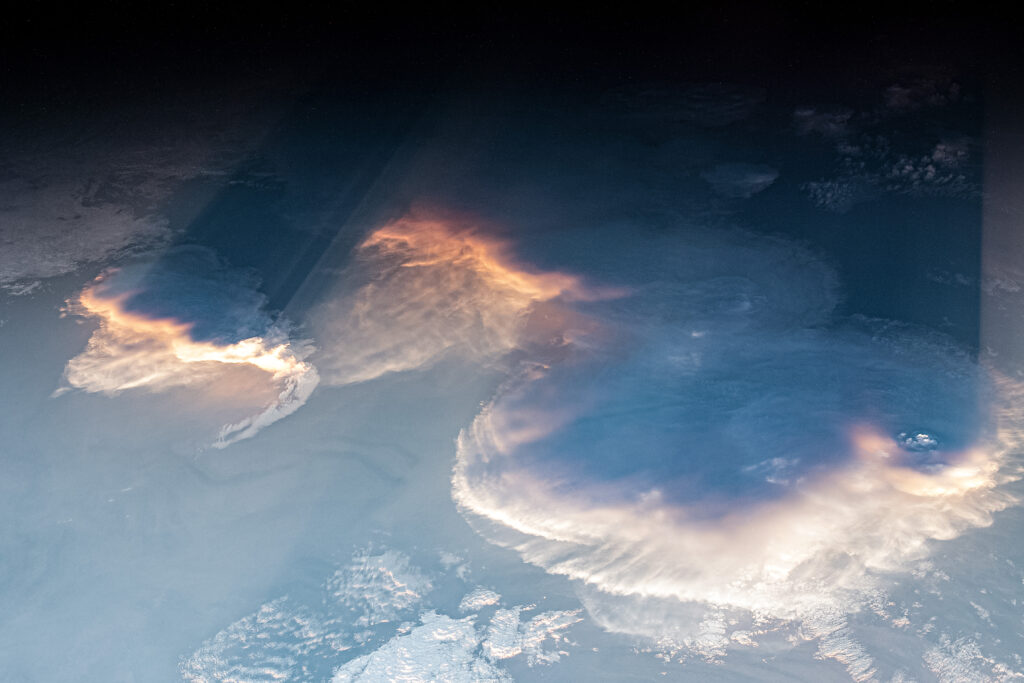The presented photo was taken by one of the ISS crew members at the moment when the station was flying over the Arabian Peninsula. The image demonstrates some interesting optical effects that can be observed near the terminator. This is how astronomy calls the line of the light divide between the illuminated and unlit hemisphere of a celestial body.

In the photo, you can see cumulus clouds, the tops of which are flattened in the form of an “anvil” due to atmospheric conditions in the tropopause. It casts elongated shadows due to the low angle of the setting sun. In addition to clouds, two atmospheric optical phenomena are also visible in the photo: twilight rays and Rayleigh scattering. Both effects are caused by the low angle of the Sun and atmospheric scattering of sunlight.
Twilight rays
Twilight rays are called light pillars that come from gaps in the clouds. They occur when the incident light is partially blocked by a tall object on the horizon. Small gaps in the clouds allow the sun’s rays to pass through them, as a result of which the rays of light form bright pillars directed away from the Sun. Dust particles in the atmosphere enhance their clarity.

Rayleigh scattering
When light passes through the atmosphere, it collides with particles and gases, which leads to a change in its direction. This phenomenon is called Rayleigh scattering. This effect is especially noticeable in conditions of a low angle of inclination of the Sun at sunrise or sunset, because the incident light must pass through a much larger part of the atmosphere than at noon. As a result of this longer path, our planet’s gas envelope scatters more short blue wavelengths of sunlight compared to longer orange and red wavelengths. In the image from the ISS, scattering is manifested in the characteristic golden hue of clouds.
Earlier we talked about another unusual optical effect, because of which the sky over South Dakota turned green.
Follow us on Twitter to get the most interesting space news in time
https://twitter.com/ust_magazine
